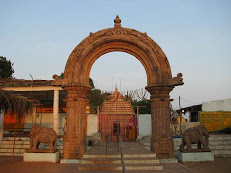A few metres away from this chimney, a major shed of the CWC depot has been completely devastated by Phailin cyclone
A tall brick built chimney of the
British era on the campus of the Central Warehouse Corporation (CWC) in the
city has withstood the super cyclone of 1999 and the recent Phailin cyclone
proving that at times ‘old can also be strong’.
This around 100-foot high chimney
stands proudly amid signs of devastation by the Phailin all around it on the
campus of the Central Warehouse Corporation (CWC) in goods shed area of the
city. The Phailin has also not been able to put any mark of damage on this
decades old chimney.
It is quite interesting to note
that a few metres away from this chimney, a major shed of the depot of the CWC
had been completely devastated by the Phailin cyclone.
This large shed containing 2,000
MT of rice had collapsed under the wrath of the cyclone. Its asbestos roof was
blown away and its walls had also collapsed making the rice stock in it exposed
to rains that accompanied the cyclone. But the old chimney stood undeterred by
the heavy winds of the cyclone as if hinting at a ray of hope.
According to regional manager,
Odisha of the CWC, S. Pravin Kumar, this brick made chimney had also not
suffered any damage due to the super cyclone of 1999. It only bears the effects
of time and nature. At present a large banyan tree has grown at the top of this
chimney. Although roots of the tree have reached the ground through the
chimney, they have also not been able to bring in cracks on its stone wall. Mr
Kumar felt some bird may have dispersed banyan seed at the top of the chimney
which has now grown into a mature tree.
Before the CWC took up this patch
of land to establish its largest depot in Odisha, it had a rice mill during
British-era. This chimney happens to be the only remnant of that rice mill.
Several times in the past, the
CWC authorities had tried to demolish this brick made chimney but they were not
successful in their effort. It has been made by small sized strong bricks which
were joined by traditional joining materials rather than cement. Moreover,
metal rings had been provided around the chimney at several places to make it
stronger. ‘These factors have till now saved this chimney from vagaries of
nature as well as human efforts to break it down”, said Mr Kumar.
The CWC has now decided not to
make any more efforts to demolish this old chimney. It would now be renovated
and used as a landmark for the CWC depot in Berhampur. As it can be seen from
quite a distance, the CWC plans to put up its signboard above the chimney after
its renovation. Source: The Hindu


after+phailin.jpg)












+in+Berhampur..jpg)














.jpg)

















































